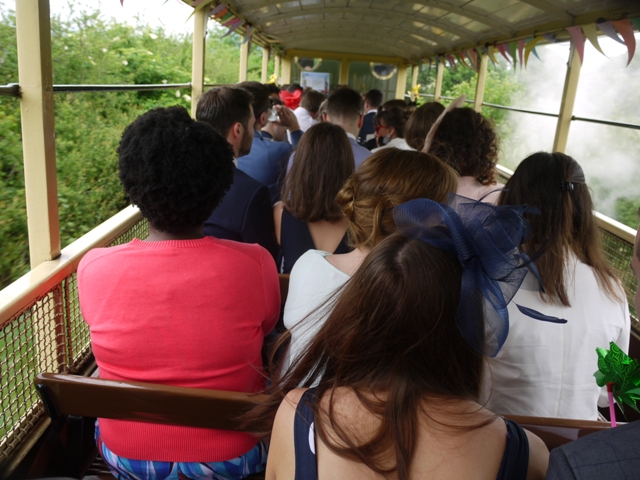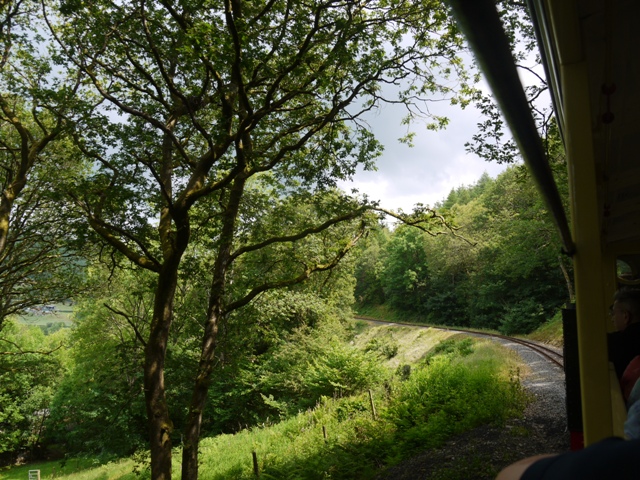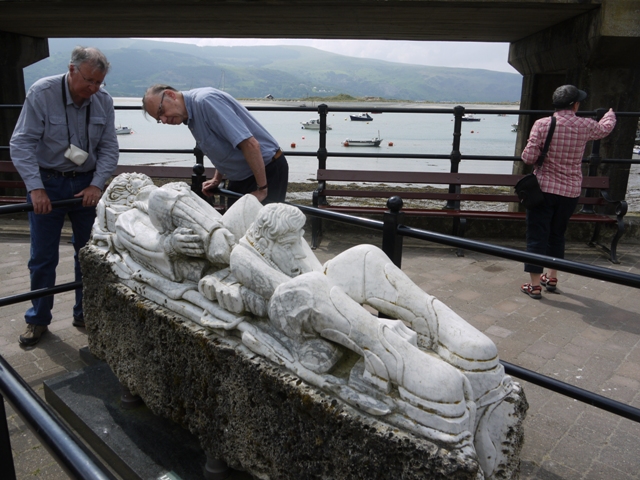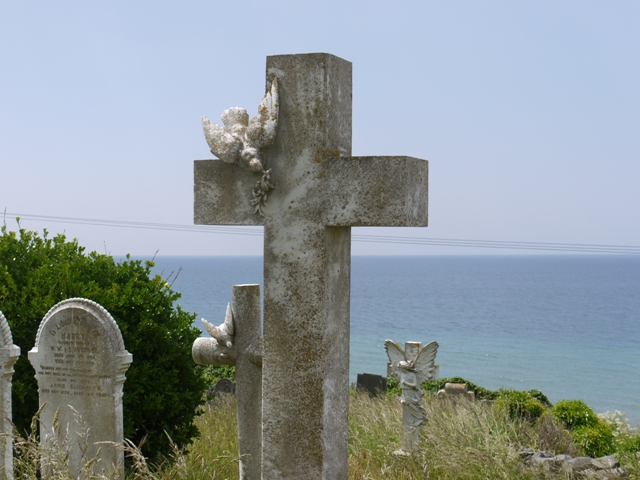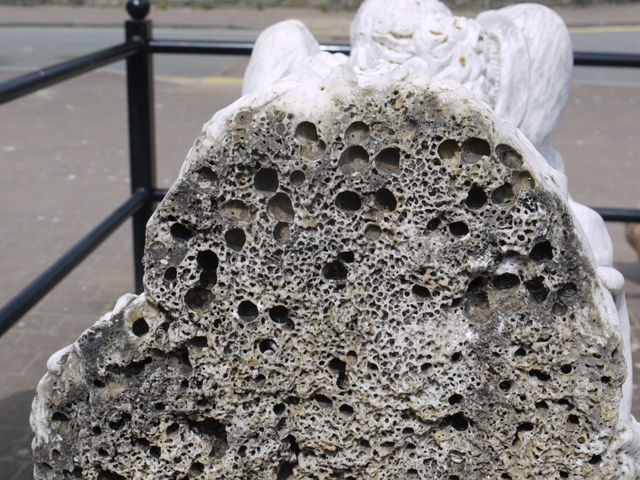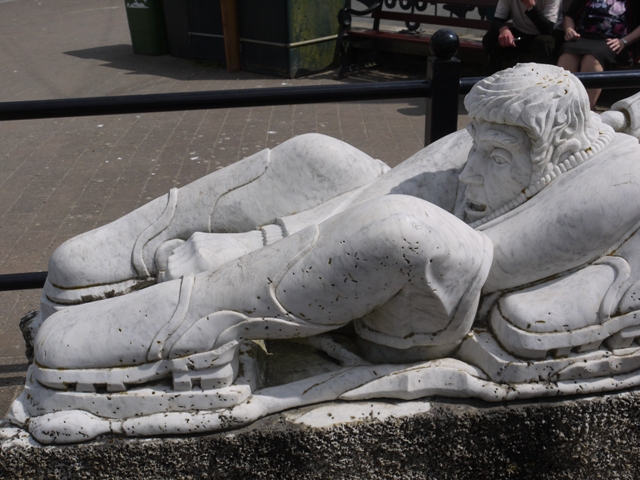by The Curious Scribbler
I was privileged to travel free on the Vale of Rheidol Railway not once but twice in the month of June.
The first was on a Wedding Special on 2nd June. Aberystwyth born Claire Lewis married Nick Lee in a charming secular ceremony at Nantyronnen station. The groom and guests got on the train at Aberystwyth. We all alighted at Nantyronnen to sit on hay bales, serenaded by a string quartet. The bride arrived for the ceremony by vintage car and the couple and their guests re-boarded the train for Devil’s Bridge, sipping prosecco. They then made their way to Mrs Johnes’ Garden at Hafod for the reception in a large marquee.
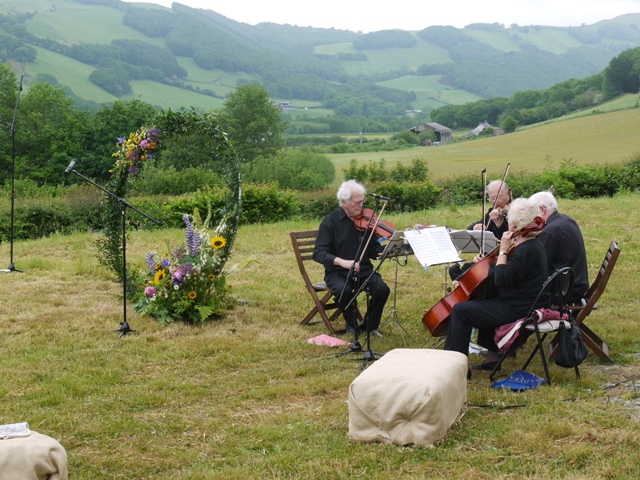
The string quartet awaits the bridal party
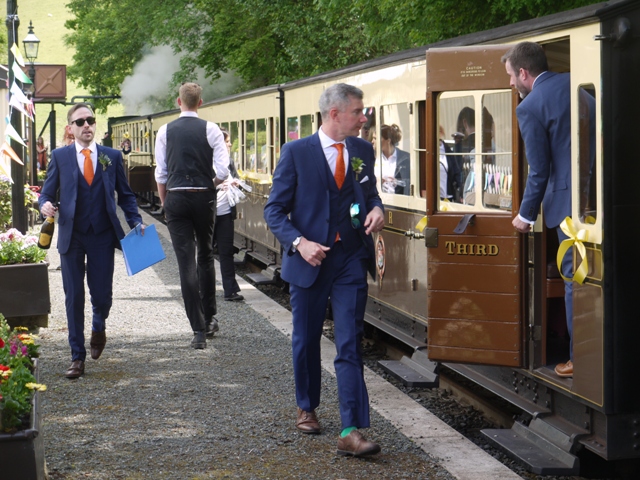
The train about to depart after the ceremony
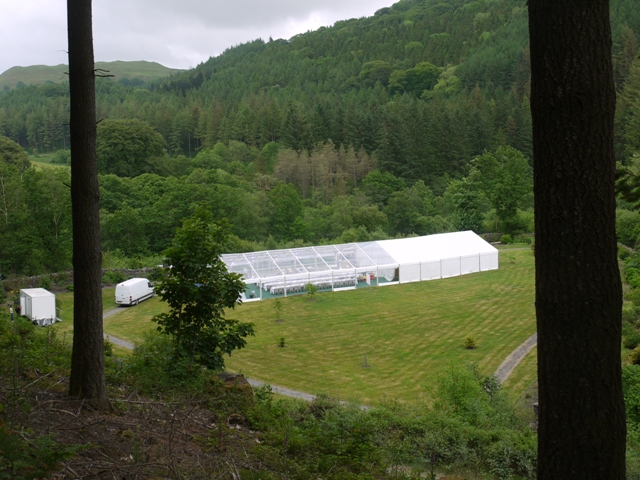
Wedding marquee at Hafod
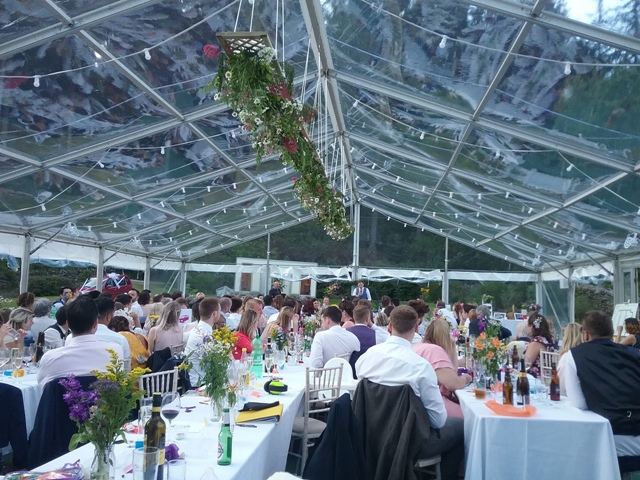
The railway is spick and span these days, a far cry from its racketty image back in the days of British Rail. The shining brass work, the uniformed staff, and colourful station gardens make it an outstanding venue. One or two of the London guests made a rapid bid to change carriages after the odd smut of soot wafted into the open carriage behind the engine, but this all added to the authenticity of the experience.
I had had a small part in the station garden display. The preceding weekend I helped in the volunteer effort to replant the five great troughs on Nantyronnen Station with colourful summer bedding, ready for the big day, and every other journey of the summer.
My second free ride came on 11 of June, as guest of the railway itself. This special journey marked a number of recent milestones: the launch of the first of four carriages which allow disabled access, the restoration of a former weighbridge building at Devil’s Bridge, and the opening, within it, of an information display about the Pine Martin Reintroduction Project led by the Vincent Wildlife Trust. CEO Rob Gambrill, the man behind the railway’s phenomenal success, welcomed us all, and at every station stop he roamed the platform chatting with guests and railway staff. A man with a magnificent train set!
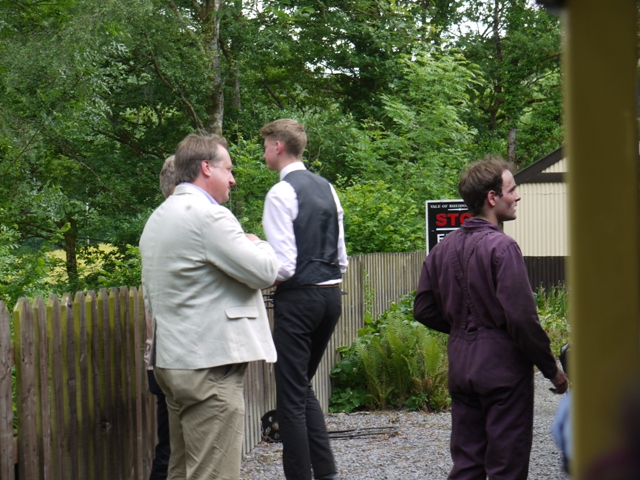
Rob Gambrill and railway staff at Aberffrwd station
As I have recorded on this blog, I was (many years ago when British Rail owned the railway) a passenger on the train which derailed spectacularly between Aberffrwd and Nantyronnen in 1986. It was an early outing of the ill-fated Vista Coach which seated visitors stadium-style facing the view. Pulled at the rear of the train on the return journey it tipped over on its face, bringing the train to a juddering halt. It was a pleasing co-incidence to learn from the driver that the immaculately fitted open carriage on which I was travelling was none other than the Vista Coach, now re-designed with traditional seating. There were no such crises on this journey.
Another reversion was that of our engine, Llewelyn, which until recently burnt oil, but now burns great chunks of anthracite. The stoker, in true period style, was in contrast to the dapper guard, quite black with coal dust. Standing at the station we could watch him shovelling coal into the furnace of the engine. Those motes of soot tormenting the wedding guests had real Thomas the Tank Engine authenticity.